In the ever-evolving landscape of digital marketing, email remains a cornerstone of customer engagement and conversion. As businesses seek to optimize their email marketing strategies, two platforms have emerged as frontrunners: ActiveCampaign and ConvertKit. Both offer unique features and capabilities, but which one is the right fit for your business? This comprehensive comparison delves into the intricacies of ActiveCampaign and ConvertKit, exploring their strengths, weaknesses, and ideal use cases. We’ll examine key features, pricing models, and user experiences to help you make an informed decision that aligns with your marketing goals and business needs. Whether you’re a small startup or an established enterprise, understanding the strengths and weaknesses of these platforms is essential for maximizing your marketing ROI.
The battle between ActiveCampaign and ConvertKit represents more than just a choice between email marketing tools; it’s a decision that can significantly impact your business’s ability to connect with customers, drive sales, and achieve long-term success. As we explore the features, strengths, and weaknesses of each platform, we’ll uncover which solution might be the perfect fit for your unique business requirements.
Key Facts
- Advanced Features: ActiveCampaign offers advanced automation and CRM features, making it suitable for businesses with complex marketing needs.
- Target Audience: ConvertKit is designed with simplicity in mind, catering primarily to content creators and bloggers.
- Core Capabilities: Both platforms provide essential email marketing tools, but they differ in their approach to automation, segmentation, and integrations.
Battle of the Titans: ActiveCampaign’s Complexity vs ConvertKit’s Simplicity
When it comes to email marketing software, the choice between ActiveCampaign and ConvertKit often boils down to a trade-off between advanced features and user-friendly simplicity. Let’s dive deeper into the key aspects of both platforms to help you make an informed decision.
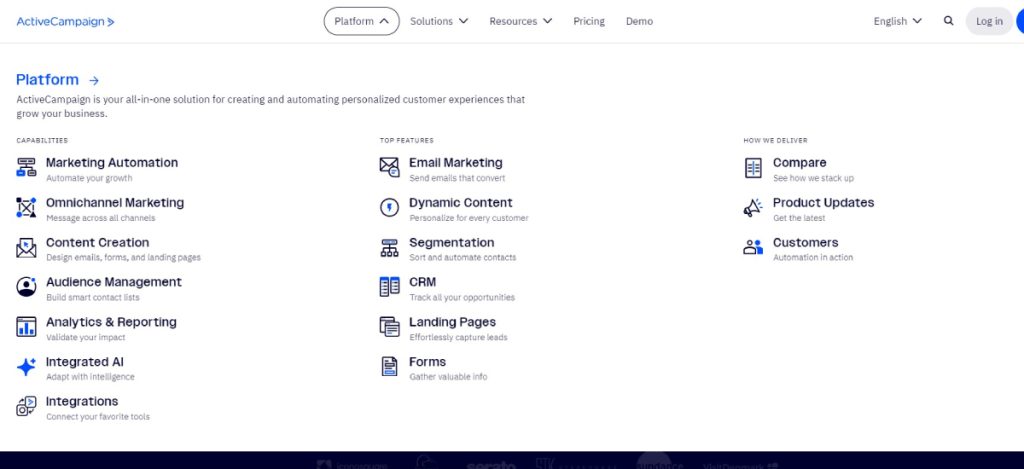
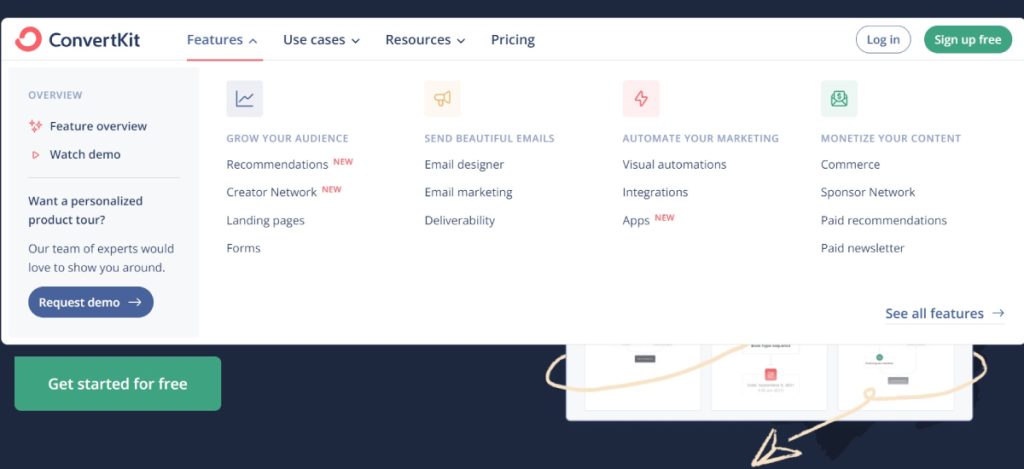
Automation Capabilities
Automation is a critical feature for any email marketing platform, enabling businesses to engage customers without constant manual effort. Both ActiveCampaign and ConvertKit offer robust automation capabilities, but they excel in different areas.
ActiveCampaign: ActiveCampaign stands out with its robust automation capabilities and extensive integrations. As noted by Larry Ludwig, an expert in email marketing, “ActiveCampaign provides complex automation workflows with if/else conditions, split actions, and webhooks.” This level of sophistication allows businesses to create highly targeted and personalized email campaigns based on detailed user behaviors and interactions.
ConvertKit: ConvertKit, while offering automation features, takes a more streamlined approach. It provides simple automation workflows with actions like adding/removing tags and setting custom fields. This simplicity makes it easier for beginners to set up effective automated campaigns without getting overwhelmed by complex options.
ActiveCampaign:
- Complex automation workflows with if/else conditions
- Split actions and webhooks
- Advanced segmentation and targeting
- CRM integration for comprehensive customer management
ConvertKit:
- Simple automation workflows with tag-based actions
- Sequences for drip campaigns
- Ease of use for beginners
- Focused on content creators and bloggers
User Interface and Ease of Use
Both platforms are renowned for their user-friendly interfaces, but they cater to different user preferences and business needs.
ConvertKit: ConvertKit takes pride in its user-friendly approach. According to Niche Pursuits, “ConvertKit is designed for ease of use, particularly for bloggers and content creators.” This simplicity doesn’t come at the cost of functionality, however. ConvertKit offers powerful features like customizable email templates, built-in landing pages, and automated sales funnels, all optimized for conversions.
ActiveCampaign: While powerful, ActiveCampaign has a steeper learning curve due to its extensive feature set. However, it offers a cleaner and more intuitive interface compared to some competitors, making it manageable for users willing to invest time in learning the platform.
ConvertKit:
- Intuitive drag-and-drop email builder
- Simple and organized dashboard
- Built-in landing page builder
- Focus on content creators with minimal complexity
ActiveCampaign:
- Comprehensive dashboard with detailed metrics
- Advanced customization options
- Cleaner interface for managing complex workflows
- Suitable for users with some technical expertise
Segmentation and Targeting
Effective segmentation is essential for delivering personalized and relevant content to your audience. Both ActiveCampaign and ConvertKit offer robust options, but with different approaches.
ActiveCampaign: ActiveCampaign provides advanced segmentation based on IP address, site visits, and specific user actions, allowing for highly targeted campaigns. It also offers predictive content and lead scoring features, leveraging AI to enhance targeting capabilities.
ConvertKit: ConvertKit, while more straightforward, still offers effective segmentation using tags based on user interactions and demographics. It allows for audience segmentation by demographics or interaction history, which is sufficient for many content creators and small businesses.
ActiveCampaign:
- Advanced segmentation based on behavior and interactions
- Predictive content and lead scoring
- Dynamic content blocks for personalized messaging
- Integration with CRM for holistic customer views
ConvertKit:
- Tag-based segmentation
- Custom fields for detailed subscriber information
- Automated segmentation based on user actions
- Focused on simplicity and ease of use
Pricing Models
Pricing is a significant factor in choosing an email marketing platform, and this is where ActiveCampaign and ConvertKit differ considerably. Understanding these pricing models is essential to determine which platform aligns best with your budget and growth plans.
ActiveCampaign: ActiveCampaign’s pricing starts at $9/month for the Lite plan, with higher-tier plans reaching up to $399/month for enterprise users. The Lite plan includes up to 500 contacts and essential features, while the higher-tier plans offer advanced automation, CRM integration, and premium support. This tiered structure makes ActiveCampaign suitable for businesses of various sizes, from small startups to large enterprises with complex needs.
ConvertKit: ConvertKit offers a free plan for up to 1,000 subscribers, making it highly accessible for small businesses and individual creators. Its Creator Pro plan costs $111/month for 5,000 contacts, offering advanced features like automated funnels, integrations, and priority support. This pricing structure makes ConvertKit more accessible for small businesses and individual creators, while ActiveCampaign’s higher-tier plans cater to larger enterprises with more complex needs.
ActiveCampaign:
- Lite Plan: Starting at $9/month for 500 contacts
- Plus Plan: More features and higher contact limits
- Professional Plan: Advanced automation and reporting
- Enterprise Plan: Up to $399/month with premium support
ConvertKit:
- Pricing scales based on subscriber count
- Free Plan: Up to 1,000 subscribers
- Creator Plan: Starting at $29/month for 1,000 subscribers
- Creator Pro Plan: $111/month for 5,000 subscribers
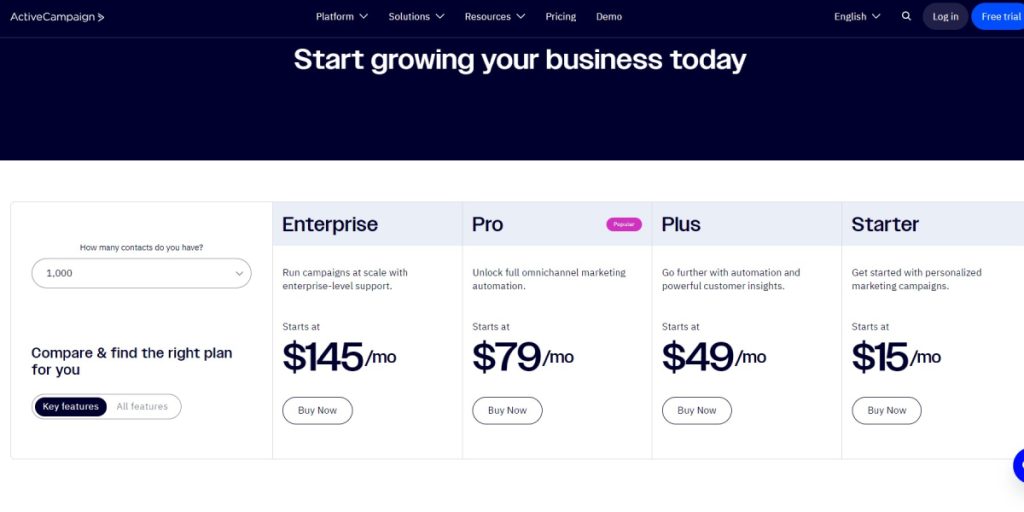
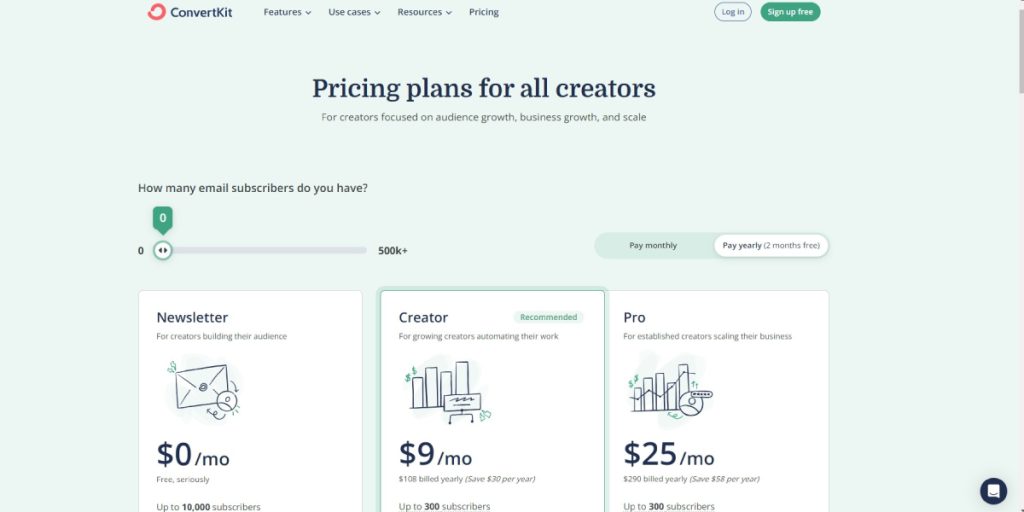
Integration Capabilities
The ability to integrate with other tools and platforms is a significant factor when choosing an email marketing service. It ensures that your marketing stack works seamlessly together.
ActiveCampaign: ActiveCampaign boasts over 870 app integrations, making it incredibly versatile for various business needs. This extensive integration ecosystem allows businesses to connect their email marketing efforts with a wide range of other tools and platforms, including CRM systems, e-commerce platforms, and more.
ConvertKit: While ConvertKit offers fewer integrations overall (around 120), it still provides sufficient options for many creators and small businesses. It also offers seamless integration with Zapier, which can extend its connectivity to thousands of other apps.
ActiveCampaign Integrations:
- Over 870 app integrations
- CRM systems like Salesforce
- E-commerce platforms like Shopify and WooCommerce
- Webinar and event tools
ConvertKit Integrations:
- About 120 app integrations
- Seamless integration with Zapier
- E-commerce platforms like Shopify
- WordPress and other content management systems
CRM and Sales Features
One area where ActiveCampaign clearly outshines ConvertKit is in its CRM capabilities:
ActiveCampaign: ActiveCampaign features a robust CRM for managing customer interactions, tracking deals, and automating sales workflows. It offers detailed sales performance metrics, deal forecasting, and even integrates social media interactions within the CRM. This comprehensive approach allows businesses to manage both their marketing and sales efforts within a single platform.
ConvertKit: ConvertKit, while offering basic CRM functionality for managing contact profiles and tagging interests, is more limited in this aspect. Its focus is primarily on email marketing rather than comprehensive sales management.
ActiveCampaign:
- Robust CRM for managing customer interactions
- Deal tracking and forecasting
- Integration with sales pipelines
- Automated sales workflows
ConvertKit:
- Focused on email marketing and content delivery
- Basic CRM functionality with contact profiles
- Tagging and segmentation based on interests
- Limited sales management features
Hidden Gems: Lesser-Known but Highly Effective Strategies
While ActiveCampaign and ConvertKit are renowned for their core functionalities, there are several hidden gems within each platform that can significantly enhance your email marketing efforts. Integrating these strategies can provide a competitive edge and drive better results.
1. Utilize Lead Scoring in ActiveCampaign
This feature allows you to assign scores to contacts based on their interactions, such as email opens and clicks. By focusing on your highest-scoring leads, you can tailor your marketing efforts to those most likely to convert, enhancing your overall effectiveness.
2. Create Conditional Content in Emails
ActiveCampaign allows for conditional content blocks, which means you can show different content to different subscribers based on their tags or behaviors. This personalization can significantly improve engagement by ensuring that subscribers see content relevant to their interests.
3. Leverage ConvertKit’s Landing Page Builder
ConvertKit offers a simple yet powerful landing page builder that allows users to create high-converting landing pages without needing design skills. This feature is often overlooked but can be a game-changer for capturing leads and promoting products effectively.
4. Automate Win-Back Campaigns
Use ActiveCampaign’s automation capabilities to set up win-back campaigns targeting inactive subscribers with personalized offers or reminders about what they’re missing. This strategy can effectively re-engage users who may have otherwise forgotten about your brand.
5. Segment Your Audience with Tags
Both platforms allow tagging, but ActiveCampaign’s tagging system is more robust. Use tags to create highly specific segments of your audience based on behavior, preferences, or demographics, allowing for more targeted and effective marketing campaigns.
6. Implement Drip Campaigns Using Sequences in ConvertKit
ConvertKit’s sequences allow you to automate a series of emails sent over time. This is particularly useful for onboarding new subscribers or nurturing leads through a sales funnel, ensuring consistent communication without manual effort.
7. Use A/B Testing Strategically
While both platforms allow A/B testing, use it strategically in ActiveCampaign to test not just subject lines but also content variations and send times. This comprehensive approach can yield insights that significantly enhance future campaigns.
8. Incorporate Surveys and Feedback Forms
Use ActiveCampaign’s survey tools within emails to gather feedback from subscribers about their preferences or experiences. This data can inform future marketing strategies and help tailor offerings to better meet customer needs.
9. Utilize Integrations for Enhanced Functionality
ActiveCampaign supports over 870 integrations with various tools, including CRM systems and e-commerce platforms. Leverage these integrations to streamline workflows and enhance the overall marketing ecosystem.
10. Monitor Engagement Metrics Regularly
Both platforms provide analytics, but actively monitoring engagement metrics such as open rates, click-through rates, and conversion rates can help you quickly identify what works and what doesn’t, allowing for timely adjustments in strategy.
Innovative Solutions by Prism Reach
While ActiveCampaign and ConvertKit offer powerful email marketing solutions, the landscape of digital marketing is constantly evolving. Enter Prism Reach, an innovative AI-powered SaaS solution designed to enhance the effectiveness of email marketing campaigns through deep personalization. Prism Reach transforms how publishers and content creators engage with their audiences, using sophisticated AI algorithms to customize every aspect of newsletters based on subscriber behavior and preferences.
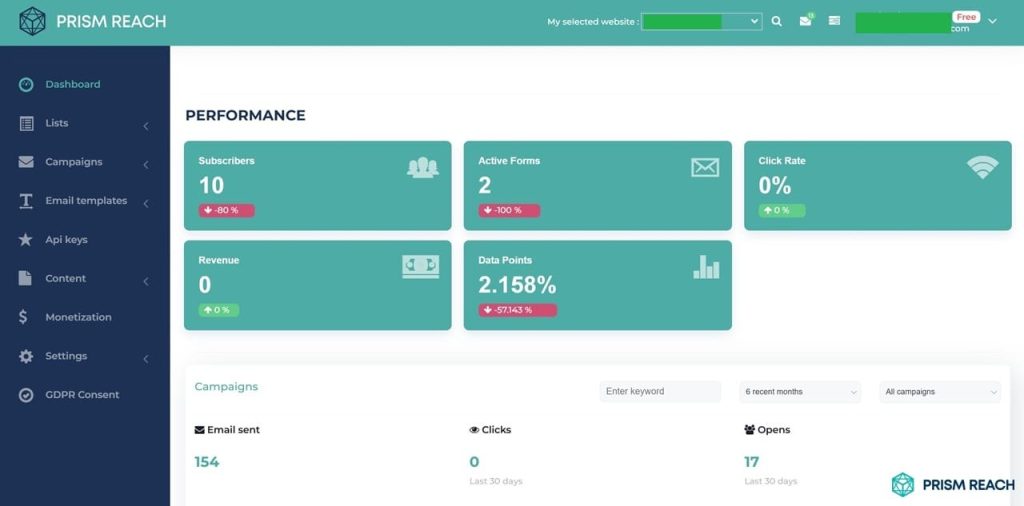
Benefits of Prism Reach
- AI-Powered Personalization: Prism Reach leverages AI to create detailed user avatars, enabling hyper-personalized content delivery that goes beyond traditional mass email campaigns.
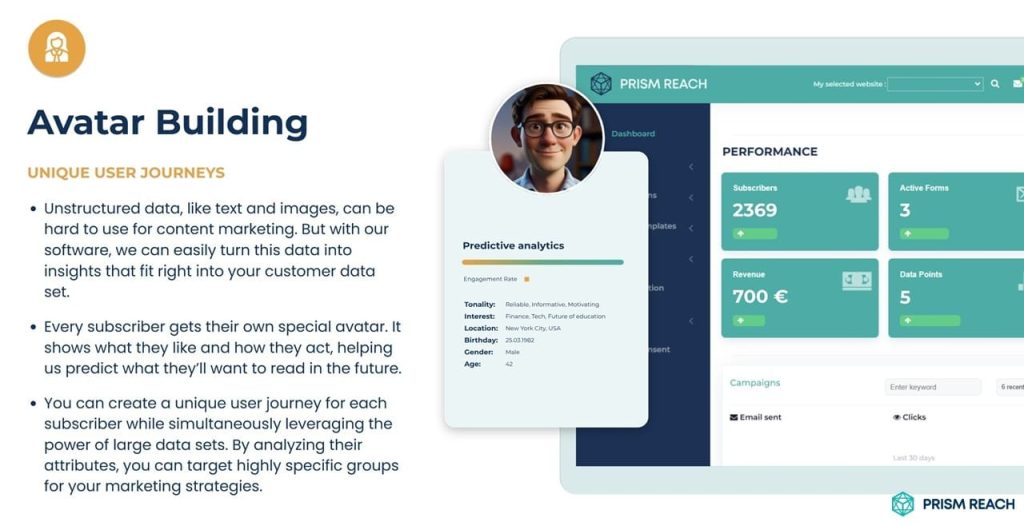
- Dynamic Content Selection: Ensures each subscriber receives the most relevant content based on their behavior and preferences, enhancing engagement and conversion rates.
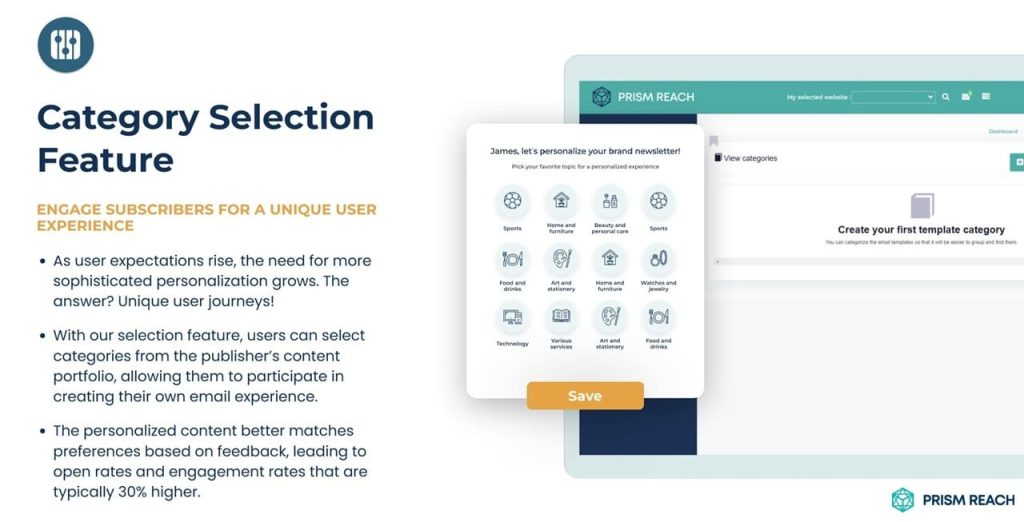
- Seamless Integration: Easily integrates with ActiveCampaign and ConvertKit, allowing businesses to leverage Prism Reach’s advanced features without overhauling their existing systems.
Integrating Prism Reach with ActiveCampaign and ConvertKit
Businesses can leverage Prism Reach alongside ActiveCampaign or ConvertKit to enhance their email marketing strategies. For instance, using Prism Reach’s AI-powered personalization with Omnisend’s advanced segmentation can create highly targeted and effective campaigns.
Similarly, integrating Prism Reach with ActiveCampaign’s comprehensive analytics can provide deeper insights into customer journeys, allowing for more informed marketing decisions and optimized budget allocation.
Practical Tips and Considerations
To maximize the effectiveness of your email marketing efforts, consider the following practical tips and strategies:
1. Leverage Behavioral Segmentation
Instead of traditional demographic segmentation, use behavioral data to target customers based on their actions (e.g., browsing history, past purchases). ActiveCampaign’s advanced behavioral segmentation ensures your messages are highly relevant and timely, leading to better engagement.
- Behavioral Segmentation: Ensures relevance and timeliness of messages.
- Conditional Content: Tailor content blocks based on user behavior.
- Dynamic Content: Display personalized product recommendations.
2. Automate Social Media Posts
ActiveCampaign allows users to automate social media posts alongside email campaigns. By coordinating messaging across channels, businesses can reinforce their marketing efforts and maintain consistent brand messaging.
- Consistent Messaging: Reinforces marketing efforts across channels.
- Time-Saving Automation: Reduces manual effort in posting.
- Enhanced Brand Presence: Maintains a consistent brand image.
3. Incorporate SMS Marketing
Many businesses overlook SMS as a marketing channel. ActiveCampaign supports SMS marketing, allowing you to reach customers directly on their mobile devices with time-sensitive offers or updates, which can lead to higher engagement rates compared to email alone.
- Direct Communication: Reaches customers on their mobile devices.
- Higher Engagement Rates: SMS has higher open rates compared to email.
- Urgency and Timeliness: Perfect for flash sales and time-sensitive promotions.
Potential Benefits of Prism Reach
- AI-Powered Personalization: Enhances email content relevance, driving higher engagement rates.
- Dynamic Content Selection: Ensures each subscriber receives the most relevant content based on their behavior and preferences.
- Seamless Integration: Easily integrates with ActiveCampaign and ConvertKit, allowing businesses to leverage Prism Reach’s advanced features without overhauling their existing systems.
Upgrade Your Email Marketing with AI Personalization!
FAQ
Conclusion
In the ActiveCampaign vs ConvertKit debate, there’s no one-size-fits-all answer. ActiveCampaign is the go-to choice for businesses requiring advanced analytics, complex automations, and a robust CRM. Its powerful features and extensive integrations make it ideal for larger enterprises with sophisticated marketing needs.
ConvertKit, with its user-friendly interface and focus on content creators, is perfect for bloggers, small businesses, and individual creators who prioritize ease of use and straightforward functionality. Its pricing structure and simplicity make it an excellent choice for those just starting their email marketing journey.
However, for those seeking the ultimate in personalization and AI-driven marketing, Prism Reach emerges as a game-changing alternative. By leveraging advanced AI technology to create hyper-personalized newsletters, Prism Reach offers a unique solution that could revolutionize how businesses approach email marketing. Integrating Prism Reach with ActiveCampaign or ConvertKit can provide a synergistic effect, enhancing personalization, dynamic content delivery, and overall campaign effectiveness.
Ultimately, the choice depends on your specific business needs, technical expertise, and marketing goals. Whether you opt for ActiveCampaign’s power, ConvertKit’s simplicity, or Prism Reach’s innovation, the key is to select a platform that aligns with your strategy and helps you build meaningful connections with your audience. By carefully considering the strengths and weaknesses of each platform, you can make an informed decision that will drive your email marketing success.
Sources
- Kadavy.net. (n.d.). ConvertKit vs ActiveCampaign. Retrieved from https://kadavy.net/blog/posts/convertkit-vs-activecampaign/
- Join Secret. (n.d.). Compare ActiveCampaign vs ConvertKit. Retrieved from https://www.joinsecret.com/compare/activecampaign-vs-convertkit
- Meg Casebolt. (n.d.). ActiveCampaign vs ConvertKit. Retrieved from https://megcasebolt.com/activecampaign-vs-convertkit/
- Nick Wolny. (n.d.). ConvertKit vs ActiveCampaign. Retrieved from https://nickwolny.com/convertkit-vs-activecampaign/